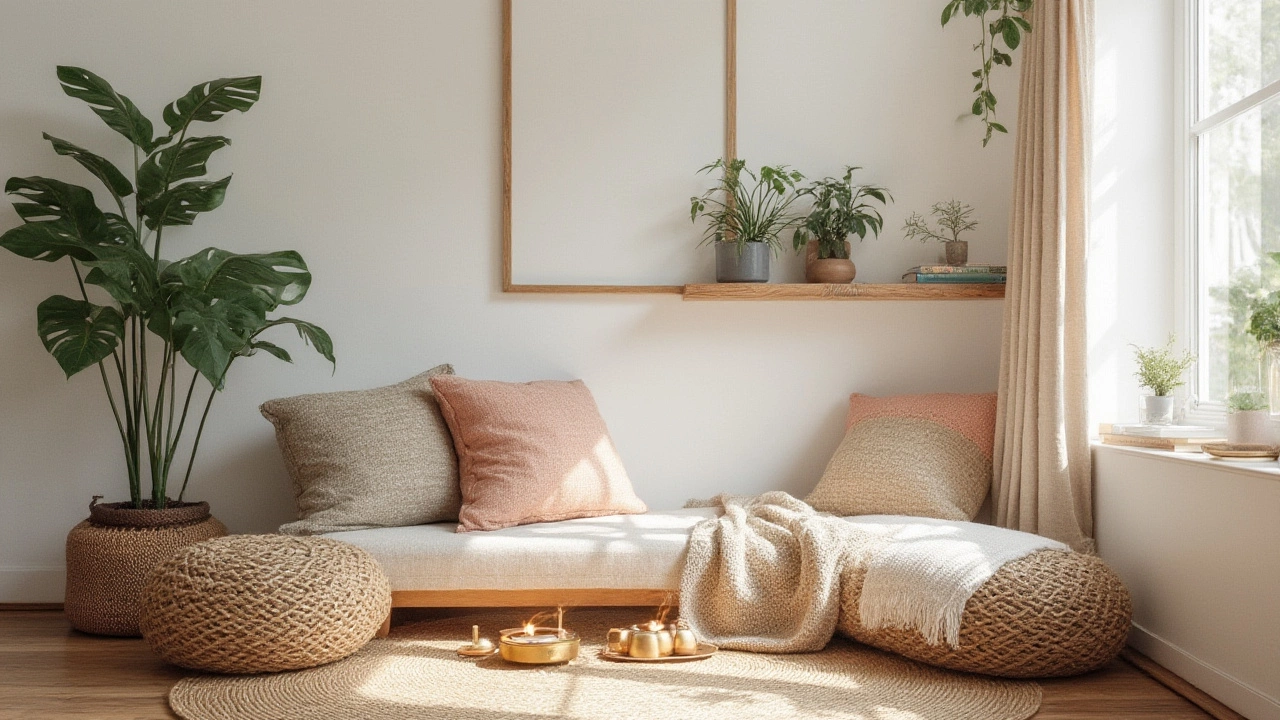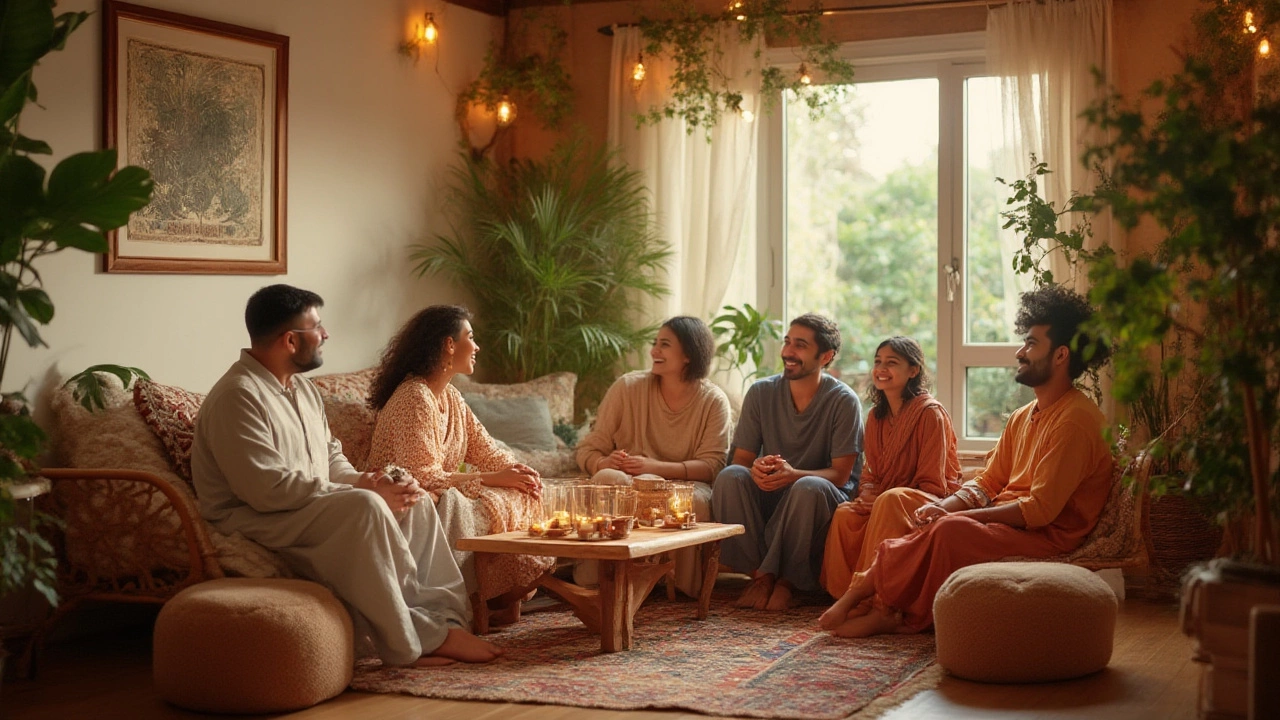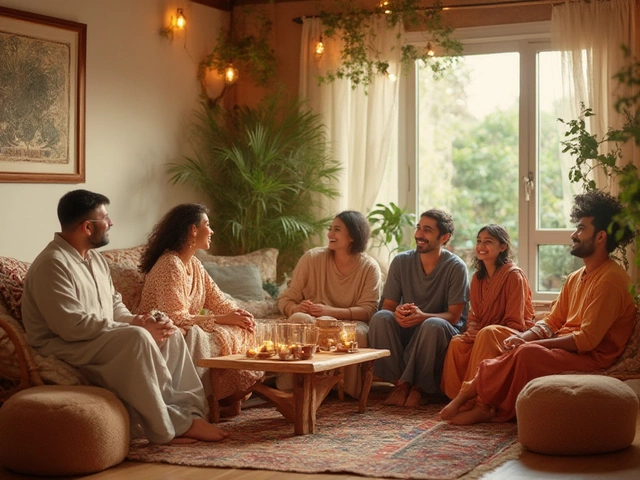You’ve seen the word “hygge” everywhere—from Instagram mood boards to coffee table books in every design-lover’s home. But the photos usually show a chunky knit blanket, a mug of coffee, a candle, and a pair of thick wool socks. Is that really all there is? The truth: hygge is not a checklist of items—it’s a feeling, a vibe, an entire way of living. Imagine walking into a space and instantly exhaling, sinking into the moment, not worried if everything’s picture perfect. Hygge interior design isn’t about chasing perfection. It’s about real comfort, calm, and being present without stress.
What Is Hygge? The Heart of Scandinavian Coziness
Hygge (pronounced "hoo-guh") comes from Denmark, and it doesn’t really translate directly to English. It’s about creating a sense of warmth, ease, and connection. You might find it in a room filled with laughter and candles on a rainy evening, or in quiet time with a good book beside a sun-filled window. The Danes have taken hygge to another level. Did you know Denmark consistently ranks among the happiest countries on earth? Locals often credit hygge for this joy. The weather there can be dreary half the year, but Danes make up for gray skies with glowing, inviting homes.
Hygge isn’t just a trend—it’s rooted in Danish culture. Back in the 18th century, the word first appeared as a Norwegian term for “well-being.” Danes spun it into a lifestyle. Their winters are cold and dark for months, so homes become a sanctuary. This focus on the home has influenced their design traditions: minimalist but warm, functional yet charming. You probably already recognize elements of hygge in the rise of Scandinavian design. Open spaces, clean lines, not too much clutter—the basics let you focus on what matters most, like who you’re with and how you feel in your space.
So, what really makes a space hygge? It boils down to a few essentials: comfort, simplicity, connection, and a touch of nature. It’s about building a cocoon for both yourself and your guests, making everyone immediately feel at ease. Whether that’s through low lighting, plush throws, or a hand-thrown ceramic mug that just feels right—these little choices add up. But remember, hygge also means sharing. There’s a social aspect to it—having friends over for homemade stew or playing a board game by the fire. The point is to create a space where people linger and truly enjoy themselves.
Scientific studies back up why hygge works. In 2016, a report from Copenhagen’s Happiness Research Institute actually linked cozy home practices—like communal meals and candlelight—to lower stress levels and better mental health. Even the clutter-clearing side of hygge can reduce anxiety. Less stuff, less chaos in your mind. So embracing hygge doesn’t just make your place look nice; it actually makes you feel better after a long day.
Key Elements That Define Hygge Interior Design
Hygge isn’t tied to a single style—it’s about how a space feels. Still, there are some recognizable features that make a hygge-inspired room genuinely welcoming. Let’s break them down so you know exactly what makes a home truly cozy, not just Instagram-pretty.
Hygge interior design starts with lighting. Forget harsh ceiling lights—soft, layered lighting is the soul of a Danish home. Candles aren’t just dipped in wax for fun; the Danes burn more candles per person than anywhere else in Europe. Even in public spaces, you’ll spot flickering tea lights everywhere. If you’re not into open flames, floor and table lamps with warm bulbs can set the same tone. Use dimmers, fairy lights, and lanterns to give rooms a gentle glow instead of a blinding flash.
Next comes texture. Hygge design delights in inviting materials—think chunky knit throws, velvet or linen pillows, sheepskin rugs, and worn-in leather chairs. These soften up modern, often stark Scandinavian spaces. Wood is the material of choice for floors and furniture, bringing in warmth while keeping things simple. Natural elements—like stone, clay, plants, and even fresh-cut flowers—remind you of the world outside, making indoors feel alive and soothing.
Colors in a hygge space lean neutral and calm. Soft whites, oatmeal, clay, pale gray, warm beige, and gentle greens or blues dominate. There’s a reason for this: these shades make a room feel clean and peaceful without being boring. Patterns do appear, but they’re usually subtle—maybe a wool throw with classic stripes or delicate checks. If you love a splash of color, keep it muted or earthy (think terracotta, moss green, or muted navy) to preserve the tranquil mood.
Decluttering is also key. Scandinavian homes aren’t clutter-free for minimalism’s sake—it’s about function and focus. Too much stuff can get in the way of togetherness or relaxation. Before adding anything, Danes usually ask: Does this serve a purpose? Does it make me happy? Hygge means rooms fit real life, not just a design magazine spread. That’s why storage baskets, shelves, and hooks are big. They tuck away the daily mess, so what’s on display feels intentional.
It wouldn’t be hygge if you couldn’t share it. Social spaces matter—a big table for long meals, inviting couches for lounging, or floor cushions for spontaneous gatherings. Danes tend to layer their seating with pillows and blankets, inviting everyone to settle in and stay awhile. Even a window seat with a well-placed cushion counts—a spot to sip coffee and people-watch. No surprise, the most hygge homes are the ones where you don’t feel pressured to act fancy. It’s about savoring small joys, from coffee in the morning light to laughter around a game board after dinner.
There’s even an outdoor angle to hygge. Danes love “friluftsliv”—the idea of open-air living. Even city apartments bring in balcony plants, cozy outdoor throws, and lanterns so you can savor the fresh air. Design doesn’t stop inside. A little roof patio or backyard corner strung with lights can pull you out for a few precious minutes of peace or connection with friends.

How to Bring Hygge into Your Own Home
This is where it gets fun. You don’t need to gut-renovate your place or blow your paycheck on designer furniture. Building a hygge home is about small, thoughtful shifts that totally transform how it feels to walk through your door. Here’s how to start, step by step.
- Light right: Swap any harsh, cold bulbs with warm white or amber ones. If you can, layer lighting—lamps, candles, and string lights let you dial up the cozy in seconds. Set up little pools of light, rather than bathing the whole room.
- Bring in comfort: Gather chunky throws, soft cushions, and rugs you want to sink your toes into. Drape blankets over chairs, pile pillows on the couch, or toss a sheepskin over a bench. If you have a fireplace—even just electric—use it as your gathering spot.
- Pick gentle colors: Paint or accessorize with calming tones like taupe, cream, pale gray, and sage. If you love bold hues, keep them to smaller pieces—a deep green plant pot or mustard yellow pillow—so they don’t overpower the calm.
- Edit the clutter: Go through your stuff ruthlessly. Only keep what you use, love, or what helps you relax or connect with others. Use pretty baskets or storage bins to hide the everyday mess fast.
- Connect with nature: Add plants (even one leafy pothos can do wonders), display a bowl of fresh fruit, or grab wildflowers from outside. Natural wood, pottery, and linen are just as good indoors as out.
- Design for gathering: Rearrange your living room so seating invites conversation. Place a tray with mugs and a teapot on the coffee table. Pull out board games, puzzles, or a stack of books for guests to leaf through.
Looking for pro-level hygge? Try a “hyggekrog.” That’s Danish for a special nook—a corner just for relaxing. It could be a window seat, a small armchair with a side lamp and blanket, or a spot by the fire with floor pillows. Make it yours. If you’re into rituals, light candles or incense each night just before you sit down. The smell and flicker signal your brain to chill out. Scientists say even a ten-minute wind-down like this can cut your stress.
Don’t skip the little touches. Hygge is personal. Maybe it’s family photos tacked up casually, handmade pottery mugs, or a line of dog-eared books. A worn-in dining table, even if it’s scratched, feels friendlier than something pristine. Danes famously prefer real to perfect. If something tells a story, it deserves a spot.
Even city apartments can go full hygge. Small spaces actually work to your advantage—cozy, contained, and easier to fill with mood lighting and soft touches. Try layering curtains for privacy and warmth, or soundproofing with rugs and fabric wall hangings to shut out city noise. Hygge is about making where you are feel safe and comforting, not about square footage.
When it comes to scent, Danes lean toward the natural—woodsmoke, pine, fresh baking, or coffee wafting from the kitchen. Skip the over-the-top air fresheners and use real ingredients if you can. Even running a pot of cinnamon and orange on the stove can transform a room’s vibe.
Why Hygge Is More Than a Look: The Science and Benefits
The real magic of hygge isn’t what’s on your shelves—it’s how it changes your mood, mindset, and sometimes even your relationships. People joke that hygge is just marketing Danish candles, but look deeper and there’s real science at play.
Researchers from the University of Southern Denmark have tracked the impact of “cozy design” elements in homes. Their studies found that rooms with soft lighting, plants, and textiles encouraged longer, more relaxed conversations between guests. Children in more “hygge” environments were less restless and more focused at play, too.
Hygge is also powerful against the winter blues. Danish psychologists claim that daily rituals—like lighting candles or having predictable, calm family dinners—help people push through long, dark, cold stretches without feeling isolated or down. These routines give the brain something positive to anticipate, making even short days feel nurturing.
It isn’t just about mood, though. Danish design schools teach aspiring architects how to build nooks and gathering spaces into their projects. The country’s public buildings, libraries, and even hospitals often feature soft seating, calming colors, and community spaces. There’s a reason they go all in—the sense of welcome and connection pays off in happier, less stressed communities.
One fascinating 2023 study found that people who applied hygge principles to their home offices—simple design, layered warm lighting, personal items, and a cozier chair—reported a near 25% increase in job satisfaction after three months. Less anonymous workspace, more sense of control and comfort. So it’s not just living rooms—any space you inhabit regularly can get the hygge treatment.
Here’s the kicker: people who design for hygge spend more time at home, but in a good way. They report looking forward to evenings in, feeling less need to fill their schedule with outside events for stress relief. The act of intentionally making your place inviting—whether you live alone or with a full house—means you don’t just rest, you actually recharge.
So forget copying the latest TikTok design fad or buying gimmicky “hygge” products. It really comes down to turning your home into your favorite place to be. When every room feels like a spot you’d pick for comfort—when even your guests sigh in relief the second they step through the door—then you know you’ve nailed it. Hygge isn’t just for Scandinavians. Anyone, anywhere, can make their space warmer and their spirits lighter—no endless winters required.

